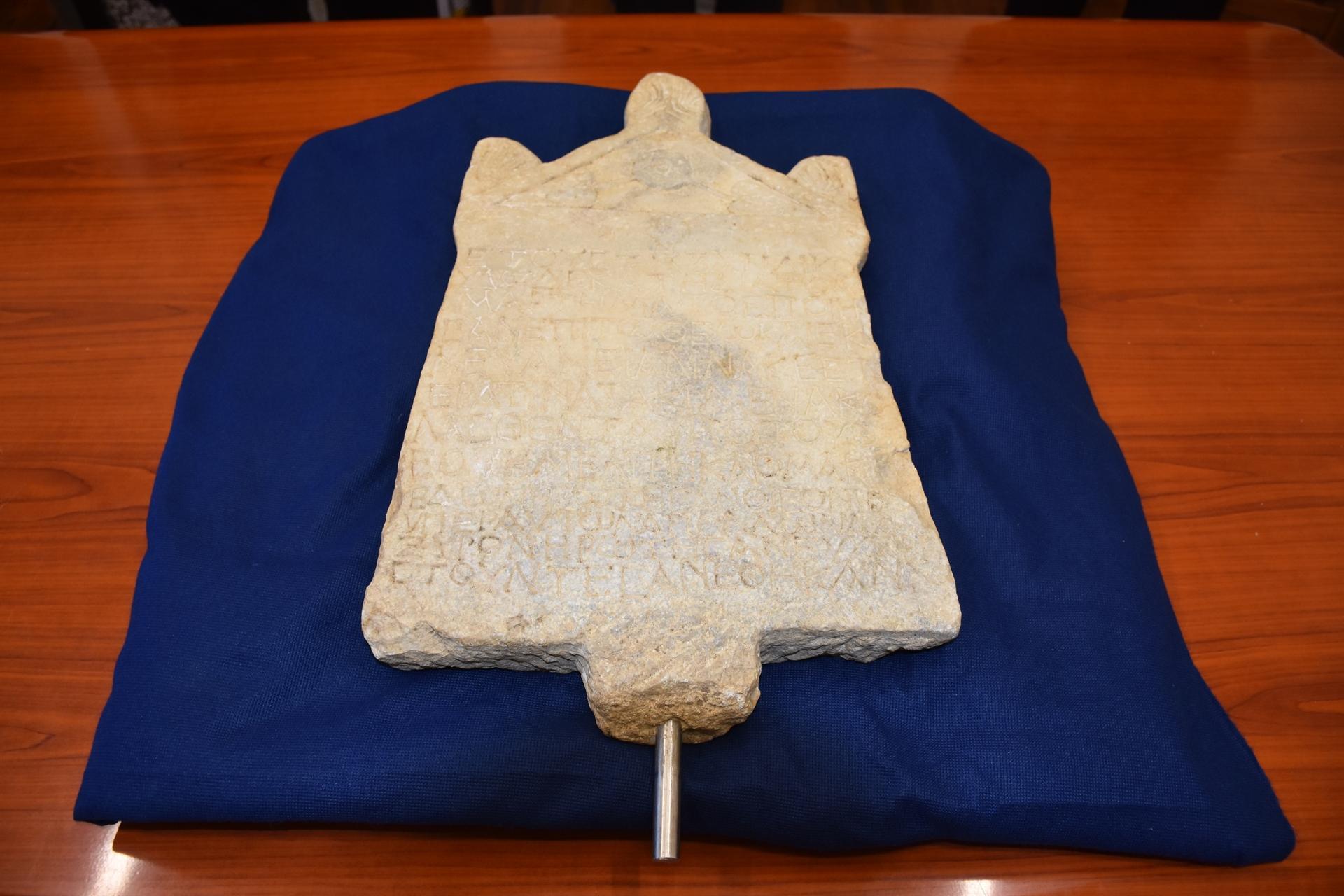
Smuggled from Turkey and discovered during a police raid in Italy in 1997, an 1,800-year-old Lydian-era inscription of confession has been delivered from the Italian authorities by Turkey’s Embassy in Rome at the end of a long legal process.
The Turkish delegation, consisting of Turkey’s Ambassador to Rome Murat Salim Esenli and Culture and Tourism Counselor Haluk Söner, went to Florence on Sept. 19 to receive the Lydian inscription from Captain Claudio Maute, the Preservation of Cultural Heritage and Historical Monuments Trafficking Crime Branch director of the Florence Gendarmerie Command (Carabinieri) and brought it to the capital, Rome.
Esenli, who closely examined the inscription, also known as a stela, signed the receipt and helped in packing the historical monument in a protected manner.
Speaking to the state-run Anadolu Agency, Esenli expressed his pleasure in witnessing such a historic moment in Florence, saying, “Not everyone has the opportunity to be a part of this moment, we are extremely happy and proud in this respect.”
Esenli explained that when he examined this file, he understood that this was an issue that should gain momentum.
“We had many meetings with our lawyer Luca Brachi, and we determined a strategy regarding the legal dimension. Our Culture and Tourism Ministry found this strategy appropriate, and we put it into practice. Our 22-23 years of work has finally paid off,” he said.
Speaking about the details of the historical inscription, Esenli said, “It is essentially a penance written by a mother and father as a result of the sadness and regret they felt for the theft of their two sons and offered it to the temple.
Stating that this penance makes it an interesting content, he said, “We see that nobody got away with theft 1,800 years ago and today in the 21st century, we take this valuable work from Italy and show it to the whole world.”
Signifying the stele with the Anatolian culture, he said, “Professor Hasan Malay himself was able to show that such steles are actually a part of the Anatolian culture where many civilizations had passed through over the time.
Stating that their work has proved that the stele belongs to Turkey as it is from its Anatolian region, Esenli said, “Thus, we can have this stela today and apart from the bureaucratic and legal aspects of the work, there is also a historical and academic dimension, which we must keep in mind, and we should be protecting all historical artifacts in our country with this thought.”
Second return from Italy to Turkey
Stating that there is intensive cooperation between Turkey and Italy in the field of culture, Esenli said after a bronze vase in 1991, this was the second artifact that Italy has returned to Turkey.
Talking about the continuing smuggling of the historical artifacts, Esenli said, “In order to prevent this, both countries should sign an agreement on the protection of cultural assets, and in this regard, we make reminders to the Italian authorities.”
Brachi, who personally followed the legal process for the return of the historical inscription, said he had been following three issues on behalf of Turkey since 1998, that though the other issues were solved within a short time, in this issue because of the troubles experienced in the legal process, such as the change of judge, the process of the return of the Lydian inscription took a long time.
Stating that he saw the inscription for the first time in 1999, Brachi said: “I am very happy with the result today. It was displayed in the relevant section of the gendarmerie for preliminary investigation. Today, after 21 years, I see it again, I am really pleased.”
[HH] Stolen from Aksyros temple in Manisa
The Italian authorities reported the situation to the Turkish authorities on suspicion that the inscription seized in a 1997 raid by the anti-historical artifact smuggling unit of the Italian gendarmerie to the workplace of an antique merchant might belong to the Lydians, an Anatolian civilization.
As a result of the examinations made by the Turkish Culture and Tourism Ministry, it was determined that the 1,800-year-old inscription was somehow abducted from the Temple of Apollo Aksyros in the ancient city of Saittai in the western province of Manisa’s Demirci district.
The ministry started the legal process in 1998 through the embassy in Rome.
The first-degree court in the city of Prato decided against Turkey in 2012, on which Turkey appealed this decision and requested the conservation of the work by the Italian security forces.
On Feb. 19, 2013, the Florence Court of Appeal ruled the Prato Court’s decision to be suspended until the court appeal process ends, during which the inscription should be kept under the protection of the Italian authorities.
As a result, the Florence Court of Appeal ruled on Nov. 5, 2019, that the Lydian work belonged to Turkey, and the return process officially began.